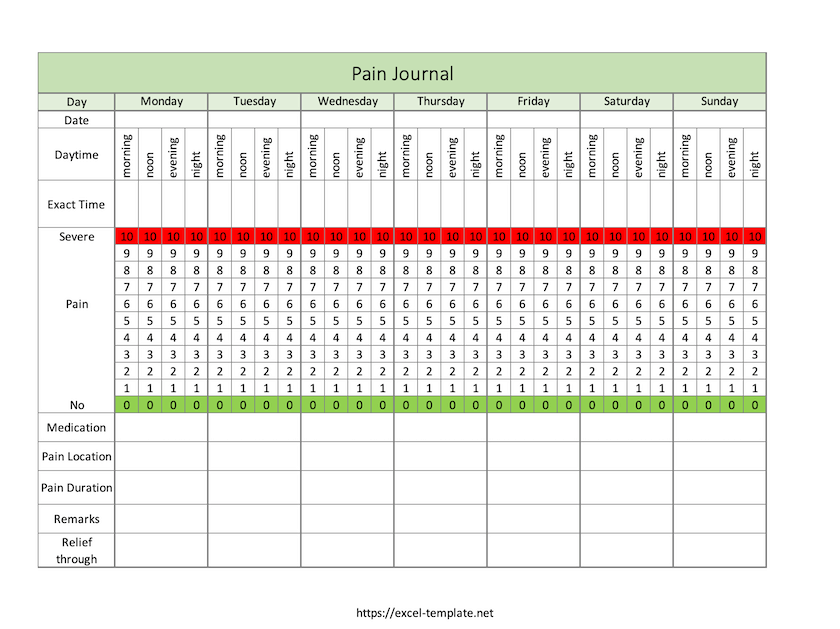The most difficult types of disabilities to deal with are often those that are the least visible to others. If this is what your disability is like, you’ve no doubt had to explain yourself over and over again to skeptics. This can be lonely and difficult. Trying to describe your diagnosis to others can be worse than the diagnosis itself at times. Fortunately, there are steps you can take now to ensure you receive the benefits payments you need. A symptom diary is a key piece of evidence to submit with your Social Security disability application. That’s especially true if you have what most people think of as “invisible” disabilities. Some examples might include: Chronic pain, migraines, multiple sclerosis, chronic fatigue syndrome, or others. Here is more information about why taking this step is useful and how to organize your diary:
Why Is Keeping a Diary of My Symptoms So Helpful?
Each day is a little bit different when you have a disability. If you are like others in your shoes, you may find that you sometimes have trouble remembering all the aspects of how your condition impacts your life. If you have difficulty noticing all of your symptoms and their triggers, a diary is a great tool.
Start your diary at least one full week before you see your doctor so that you can be sure all of your symptoms have a chance to appear and be noted. Here are some examples of things you can note:
- Times you had difficulty getting up
- Nights when you slept poorly or not at all
- Symptoms like headaches, pain, or difficulty moving
- Times it was difficult to complete a basic task
Having this symptom diary at hand when you see your doctor will prevent you from forgetting to mention something important during a rushed appointment. This diary can also help when it comes time to fill out your application for SSDI benefits.
What Do I Put in My Symptom Diary? 4 Key Things to Track
Disability advocates suggest you should include the following items in your diary:
- How often symptoms happen: Daily? Weekly?
- Which symptoms come from your medications vs. your diagnosed health problems?
- How much those symptoms limit your ability to do daily activities like cooking, cleaning, showering, getting dressed, socializing, driving, or other household tasks. Any limitations or problems you are having throughout a regular day are things you should note.
- If you still work, how often do these symptoms/health issues make you late for work or call in sick? If you are working reduced hours or recently had to quit a job because of your condition, note when that started.
You can also write down some additional details to help your doctors better treat your condition:
- Approximate time and date when incidents occurred because of your disability. These might include a fall, a seizure, or episodes of acute pain.
- How long your symptoms last and what circumstances seem to trigger them. Note if your medications are helping. List the medication you take, along with any noticeable side effects.
- Describe your pain and where in the body it occurs. Are some times of day better or worse?
Types of Symptom Diaries
Here are some common ways people focus their symptom diaries:
- An asthma diary records your triggers and the duration and severity of any events.
- A sleep diary tracks your nightly patterns and fatigue levels. Record how long and when you fall sleep each night.
- A monthly headache diary can track when you experience pain and how long it lasts. Also note any specific triggers and sensitivities.
- A medication or treatment diary is useful for recording routines and patterns in treating your health issues. It can show how many good vs. bad days you have with your diagnosis.
- Finally, you can use a pain diary to create a chart tracking your overall progress. This will help you focus in on triggers and the intensity of your pain.
Will a Symptom Diary Help with My SSDI Application?
Your diary will only be briefly looked at if you submit it with your application. This tool is more useful to you personally, and to your doctor. The medical evidence (and what your doctor concludes about your condition and prognosis) is more important to the Social Security Administration than what you record each day. That said, a symptom diary will help you get the most accurate diagnosis, so it is worth doing.
In addition, your symptom diary can help show how your health issues limit your ability to work. If the claims examiner sees you often struggle with basic self-care, a 40-hour work week is likely impossible.
What Template Should I Use?
There are many symptom or pain diary templates online, including this one:

If you want something different or printable, keep searching until you find a template you know you’ll feel comfortable using regularly.
Help Is Available
Applying for disability benefits and trying to find the best treatment at the same time can feel stressful when you’re ill or disabled. If you need help, talk to an experienced Social Security attorney for free over the phone. Having a disability lawyer file your paperwork makes the process much easier.
Disability lawyers in every state work on contingency, so you’ll pay nothing for claim help now. Click here to find out if a lawyer in our network can help you.
Get Your Free Benefits Evaluation
Laura Schaefer is the author of The Teashop Girls, The Secret Ingredient, and Littler Women: A Modern Retelling. She is also an active co-author or ghostwriter of several nonfiction books on personal and business development. Laura currently lives in Windermere, Florida with her husband and daughter and works with clients all over the world. Visit her online at lauraschaeferwriter.com and linkedin.com.

